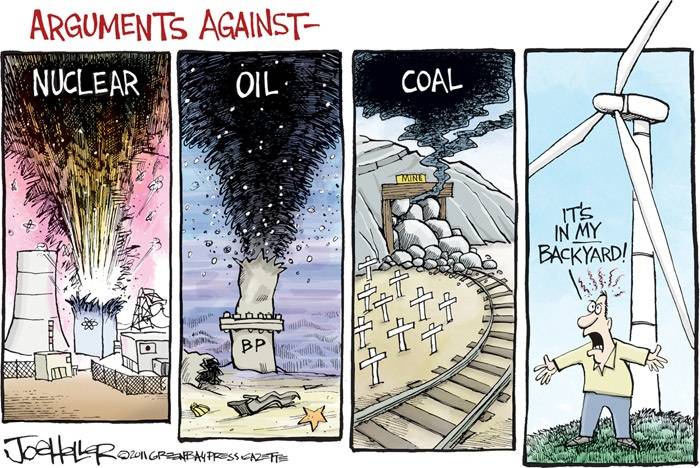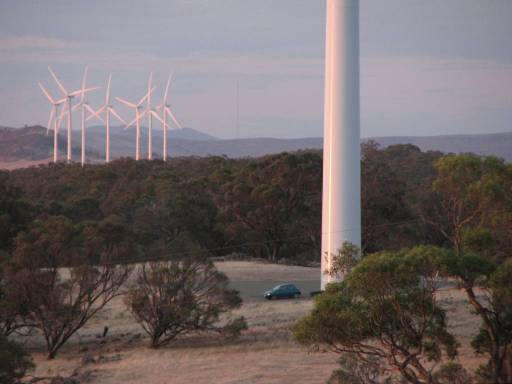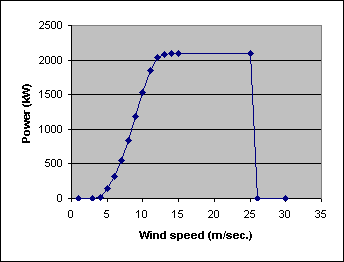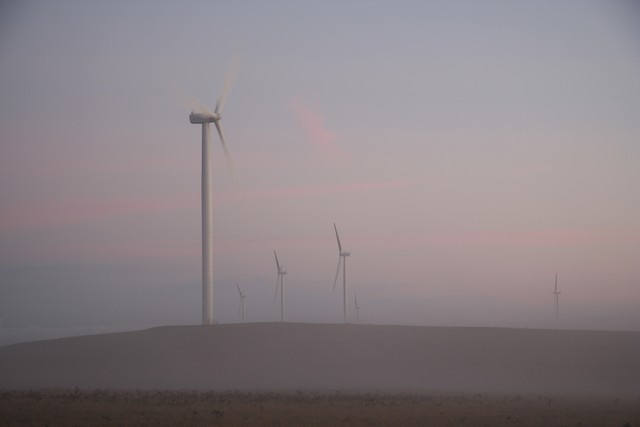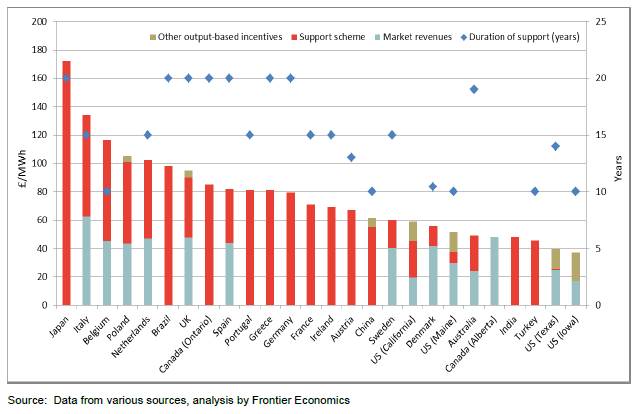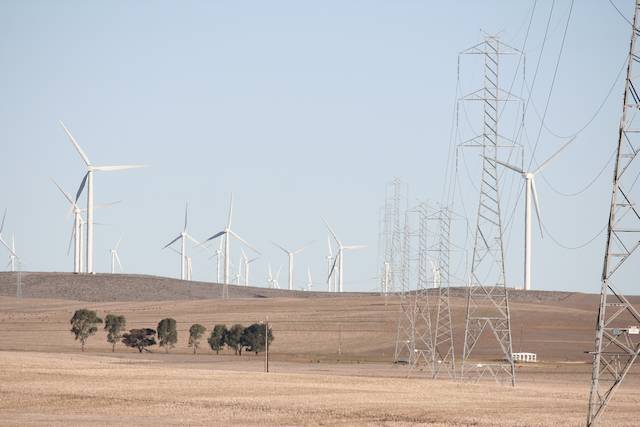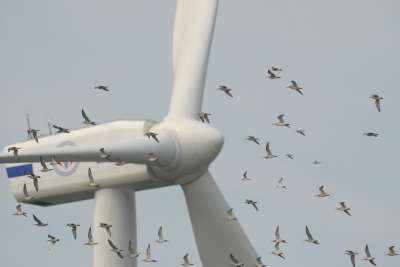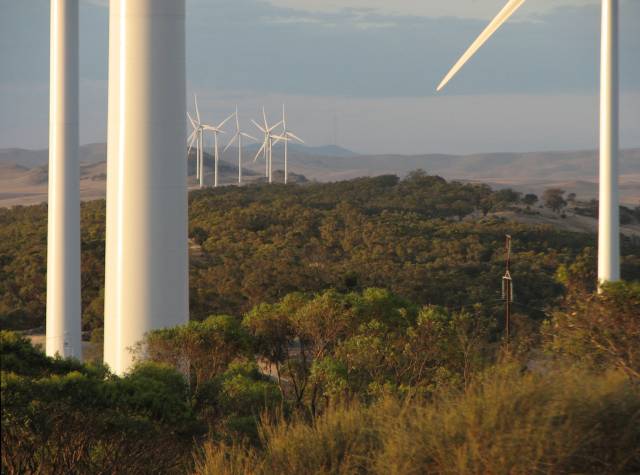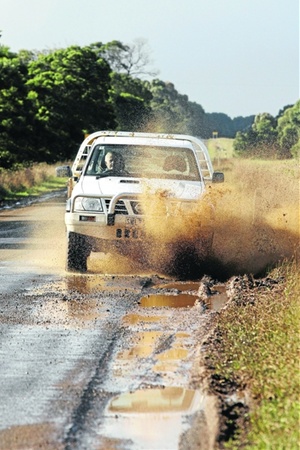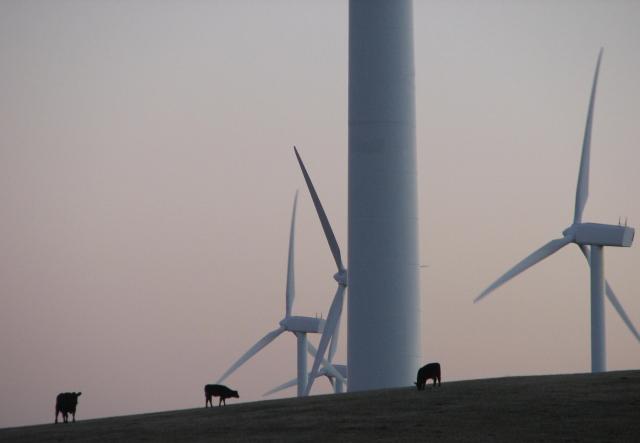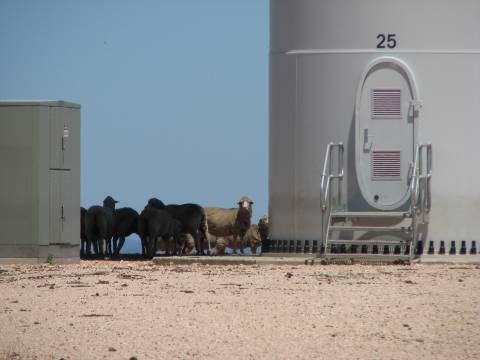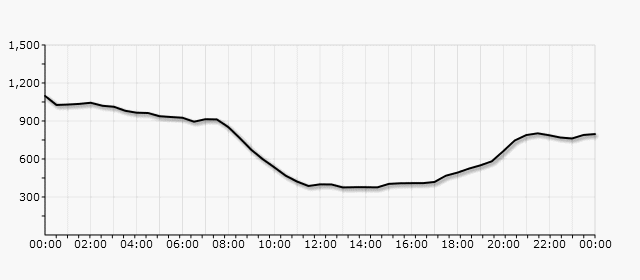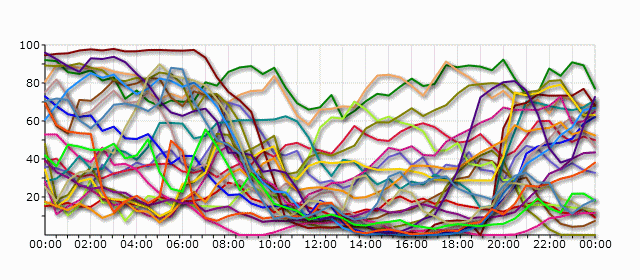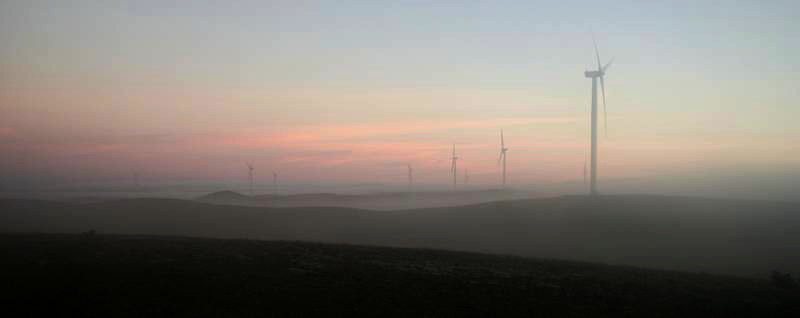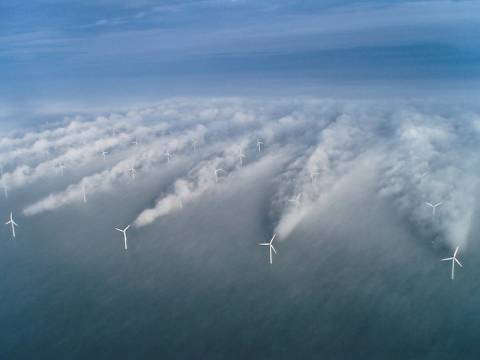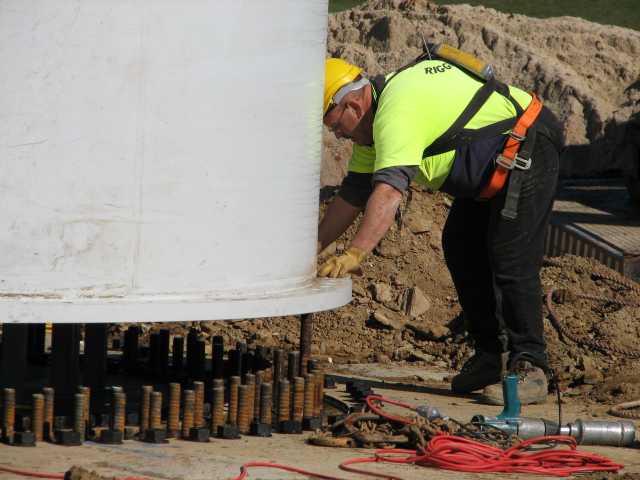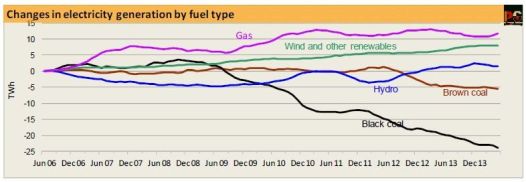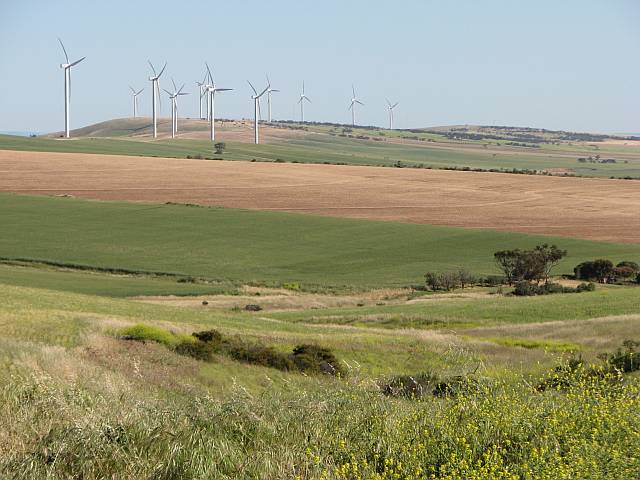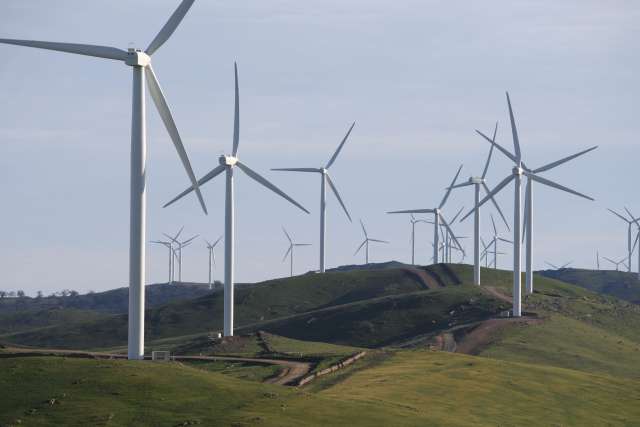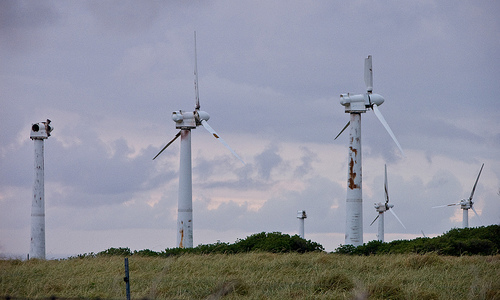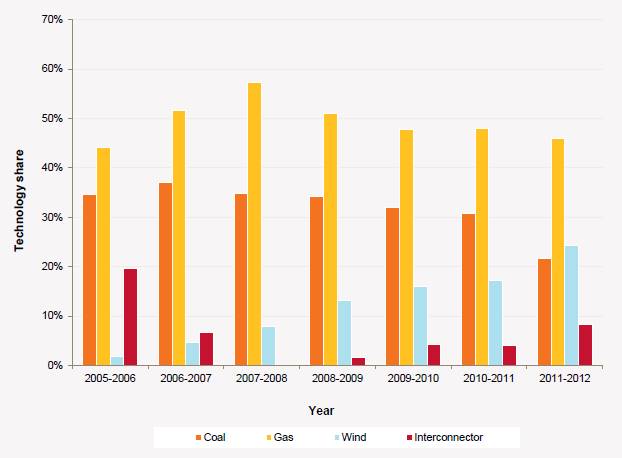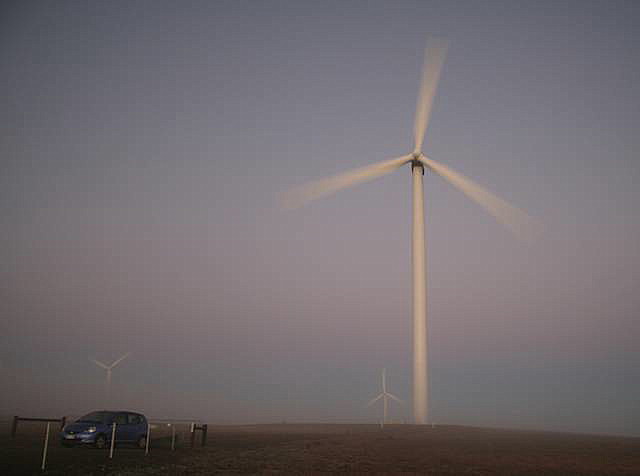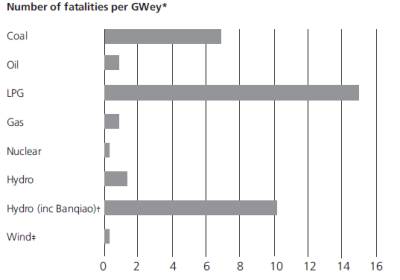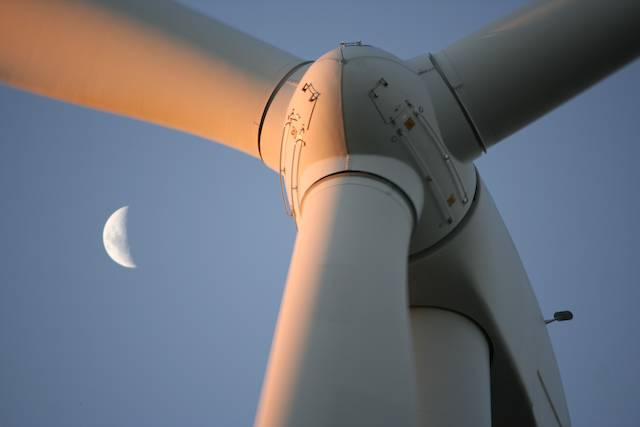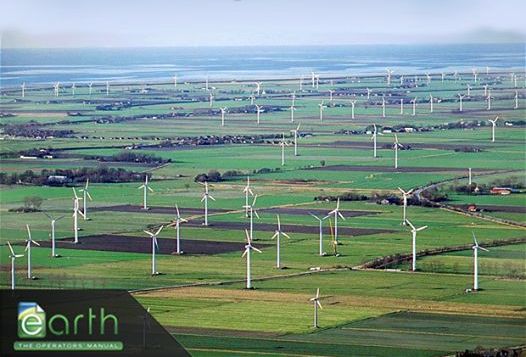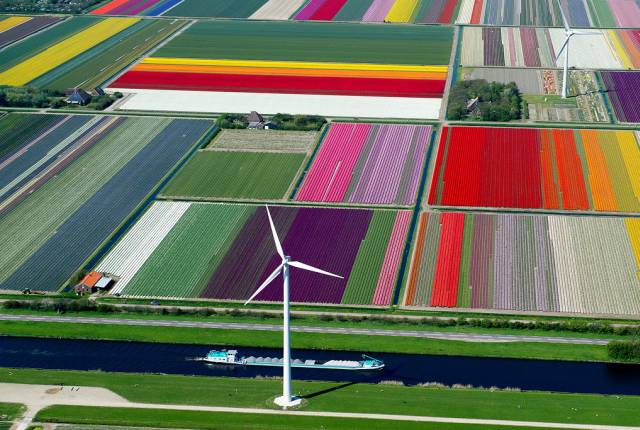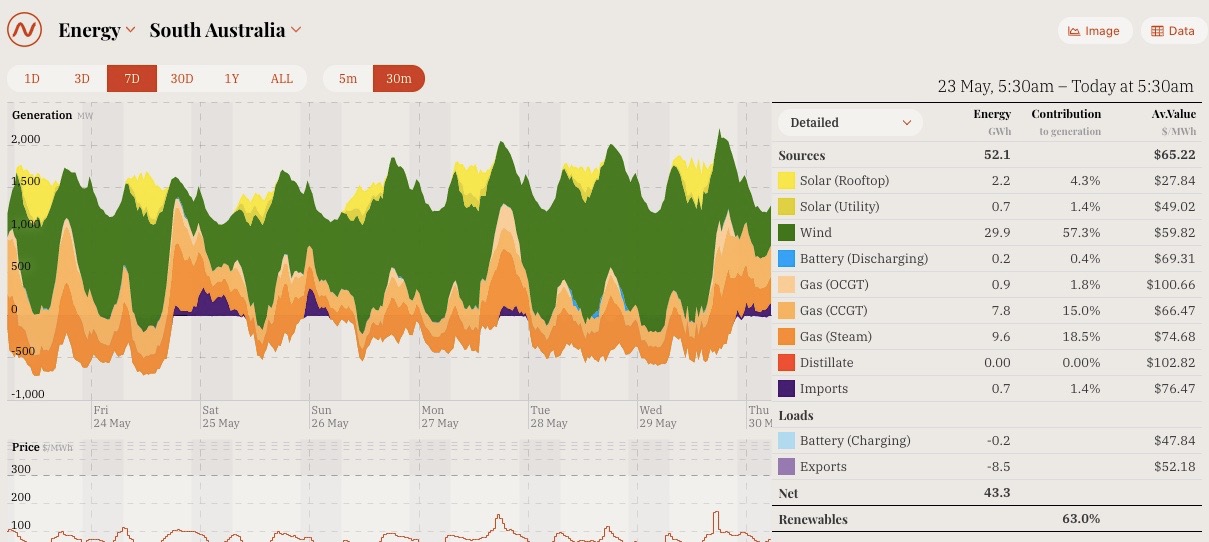There are many unjustifiably claimed problems with wind power; most of this page deals with these false claims.
The section in this box deals with the real problems connected with wind power.
| |
Changing the local environment
A big wind farm, by taking energy from the local wind, will slightly change local wind speeds and slightly affect local temperatures.
A big solar PV farm is probably going to be darker in colour than the land it covers; so while a significant part of the solar energy it absorbs will be converted to electricity and sent away, it may also have some local warming effect during the day and (radiative) cooling effect overnight.
Changing the global environment
In January 2019 there was some publicity given to one piece of research that suggested that harvesting enough wind and wave power to fulfil all of Mankind's needs could 'affect the earth's energy balance'.
I would have to see independent research confirming this before I took it very seriously, but certainly 'you can't make omelettes without breaking eggs'.
We would have to expect some impact.
Wind turbines take energy from the wind; so do trees.
The earth has lost a great many of its trees and is continually losing more, perhaps building a great many wind turbines will restore the status-quo in regard to the world's winds?
If we want to continue to have cheap and abundant energy we must make a choice between the small environmental impacts of renewable energy and the huge and devastating effects of the burning of fossil fuels.
|
|
Wind farms are large industrial installations; any large industrial
installation comes with impacts.
The world must move away from the burning of fossil fuels.
Reducing energy consumption should be a very high priority, but people
demand cheap energy and wind farms are less problematic than most other
methods of generating electricity.
This section lists some of the real problems associated with wind farms and
will redirect the reader elsewhere (mainly on this page) for details.
The problems can be placed into several categories.
Intermittency, power availability and transmission problems
The wind does not
blow all the time.
When the wind is not blowing wind turbines do not generate power.
At times of peak electricity demand on very hot days winds tend to be lighter
than average.
The cost of electricity storage is falling and will make variable
energy sources such as wind and solar increasingly competitive.
When any type of generation is not in the same place as consumption there
is the need to transmit the power from one place to another.
This requires very expensive high capacity, high voltage transmission lines.
For example, South Australia has much more wind power per capita than other
states; if wind generation is high and consumption is low in SA then the
power must be sent interstate.
Noise problems
Turbines can, under some circumstances be heard at distances at least as
great as 2.5km.
While the sound is not loud, some people find it annoying, and it has been claimed to cause sleep problems in some people.
Sleep problems can lead to anxiety and stress in some people; this, in turn,
can lead to
health problems.
However, the report following a major study by
Health Canada stated that:
"Self-reported health effects (e.g., migraines, tinnitus, dizziness, etc.),
sleep disturbance, sleep disorders, quality of life, and perceived
stress were not related to wind turbine noise levels."
The emphasis above is mine.
I have written much more extensively on the subject of
wind turbine noise on another page on this site.
Around 2010-2015 farmers who hosted wind turbines were typically paid at
least $10 000 per turbine per year by a company running a wind farm.
Their neighbours, who did not host any turbines, received no direct benefit.
This, of course, led to envy and resentment.
Trust Power have offered a financial
solution for this at their
proposed Palmer Wind Farm in
South Australia.
They are offering annual cash payments to nearby residents.
Another, perhaps preferable, arrangement would be a gift of shares in the
wind farm, as then the receiver would have an interest in the running and
profitability of the wind farm.
Of course, even without the sort of direct benefit Trust Power are talking
about the neighbouring people may benefit indirectly, for example by the
community funding that most
wind power developers set up, or from contracting or employment etcetera,
but there has not generally been a good balance of financial advantage in
the immediate vicinity of a wind farm.
Invasion of space problems
Some people move to country areas because of the relatively undeveloped
feel of the place.
Others have lived in an area for a long time and have developed a feeling
of attachment to the place as it is and understandably might not think it
will be improved by a row of wind turbines on nearby hills.
Aesthetic problems
This is related to the invasion of space problem above.
Some people like the
look of wind turbines, others
hate them; it is a matter
of personal preference – 'beauty is in the eye of the beholder'.
There are certainly places of particular aesthetic value where wind farms
should not be built; I would think that almost everyone would agree on that.
Where the disagreement comes in is in the balance between the aesthetic
value of a particular area and the urgency of the need for renewable energy
and emissions reduction.
High capacity power transmission lines cost in the order of a million dollars
per kilometre and wind farms need to be built in areas with a good wind
resource, so financially viable wind farm sites are limited.
The life of a wind turbine is expected to be around 25 years.
What happens to it when it reaches the end of its useful life?
Some wind farms in the USA have simply
been abandoned, leaving broken and rusting towers in conspicuous positions.
(As of early 2020 no wind farm has ever been abandoned without dismantling in Australia.)
There are a number of
environmental concerns that
are perfectly valid.
Wind turbines do kill some
birds and there are problems involved with the necessary destruction of remnant
native vegetation
and possible
erosion problems connected with the building
of
roads and hardstands (the bare
areas at the bases of the turbines).
It seems that wind turbines kill a worrying number of
bats, but there is a lack of research on this, perhaps because birds are pretty and visible while bats are rarely seen and are not 'cute and cuddly'.
As of 2022 I believe that most wind turbine blades were not recycled; they were dumped at the end of their useful life.
Turbines and turbine blades are most often disposed of because they have been superseded by larger ones.
Most parts of a wind turbine are fully recyclable at the end of their typically 20 - 25 year lives. As the technology matures wind turbines and turbine blades should have even longer lives.
By mid 2022 several, perhaps all, of the turbine manufacturers were looking into ways of making turbine blades recyclable. See World’s first “fully recyclable” wind turbine blades roll off production line, in RenewEconomy, 2021/09/08, written by Sophie Vorrath and Can wind turbines be recycled? by ENGIE, 2021/09/08.
Plainly even turbine blades that have to be scrapped at the end of a 20 or 25 year life is far better environmentally than simply digging up (or pumping up) and burning fossil fuels.
At least some wind turbines, and a
great many other
industries, use magnets based on a group of elements called rare earths;
the mining of rare earth minerals in China seems to have been carried out
with little concern for environmental damage.
Much of the world's rare earths come from China, see the
Guardian Weekly for a description of
some of the environmental damage there.
The graph on the right shows the major uses of rare earth elements in the
USA.
Note that wind turbines do not even rate a mention; the magnets used in wind
turbines (and in a myriad of other uses) would probably come under the
'Other' group on the graph.
Uses in the rest of the world would be similar.
Discussions on the uses of rare earths are given at
BBC and
Geology.com.
Problems to do with poor practice
-
Some wind farm developers have been less than honest when they have told
people, for example, that they will not hear the turbines.
-
Some developers make little effort in keeping the local people
informed
about the development.
-
Some wind farm developers place
confidentiality clauses in
contracts with the turbine-hosting landowners that limit the landowner's
freedom of speech in matters relating to the wind farm.
This
causes mistrust and resentment and places the whole industry in a bad light.
Secrecy should be avoided, and limiting freedom of speech may well be
unethical, certainly if the organisation doing the limiting does not freely
admit that it is limiting the freedom of speech of the landholders.
Social disruption
Sometimes, when a wind farm is proposed,
communities are split into supporters
and opponents.
Occasionally bad feeling arises.
In my experience this only happens when there is a vocal minority who
spread misinformation about wind farms.
For example, there has been no social disruption due to the
Clements Gap and
Snowtown wind farms (both near
my home) because there was no vocal opposition.
Neither does there seem to have been any concern with the
Wattle Point Wind Farm on
southern Yorke Peninsula.
On the other hand the proposed
Ceres wind farm on Yorke Peninsula
(between Snowtown and Wattle Point)
has met with significant opposition; a large part of which seems to
originate with only two or three very active people involved in a dishonest
group calling itself the
Heartland Farmers.
Interestingly, I can write in mid 2017 that a large part of the concern with a
proposed nearby wind farm has related to "wind turbine syndrome": the (false)
belief that wind turbines can make people sick.
However, by 2017 this delusion seems to have run its course and is rarely
mentioned any more.
(I've written on wind turbines and health
elsewhere on these pages.)
Renewable energy sources displace conventional generation, which provide ancillary services including things like voltage and frequency control.
With increasing renewables in a grid these services must be provided from some
other source.
By mid 2017 ancillary services were starting to be built into wind farms.
The concrete base can be left in place, possibly covered with soil so that farming can take place over it.
The towers are either steel or concrete, both easily recyclable.
Similarly, the gearbox (if any) and the generator present no particular problems in recycling.
As of 2019 the recycling of wind turbine blades presented problems.
At the time it was possible to use old glass fibre blades in the cement industry, but the more modern carbon fibre blades were not recyclable.
It should be said that turbine blades only make up some 2-3% of the mass of a wind turbine.
You can read more on recycling wind turbine blades at
Living Circular, by Veolia,
Wind Power Engineering,
Resource Recycling and
Recycling International.
Others can be found by searching the Internet.
Other problems
Wind turbines can cause problems with
television reception and
interference to
radar installations.
Shadow flicker can be annoying
when the shadow of moving turbine blades fall on a house at certain times
of the day and year.
Wind turbines limit where
aircraft can go and this
can pose problems for agricultural aircraft services.
Fires in wind turbines, while rare, are very
difficult to fight because of the height of the towers.
What is the alternative?
Finally, we must consider where we are going to get our energy if we do not
build sustainable energy infrastructure such as wind farms.
Very few people will be willing to get by with substantially less energy
and using fossil fuels or nuclear power comes with far more problems than
does wind power.
The burning of coal, in particular, has caused, and continues to cause, great
environmental and health
problems.
We must do all we can to slow
climate change.
"You cannot make an omelet without breaking eggs."
